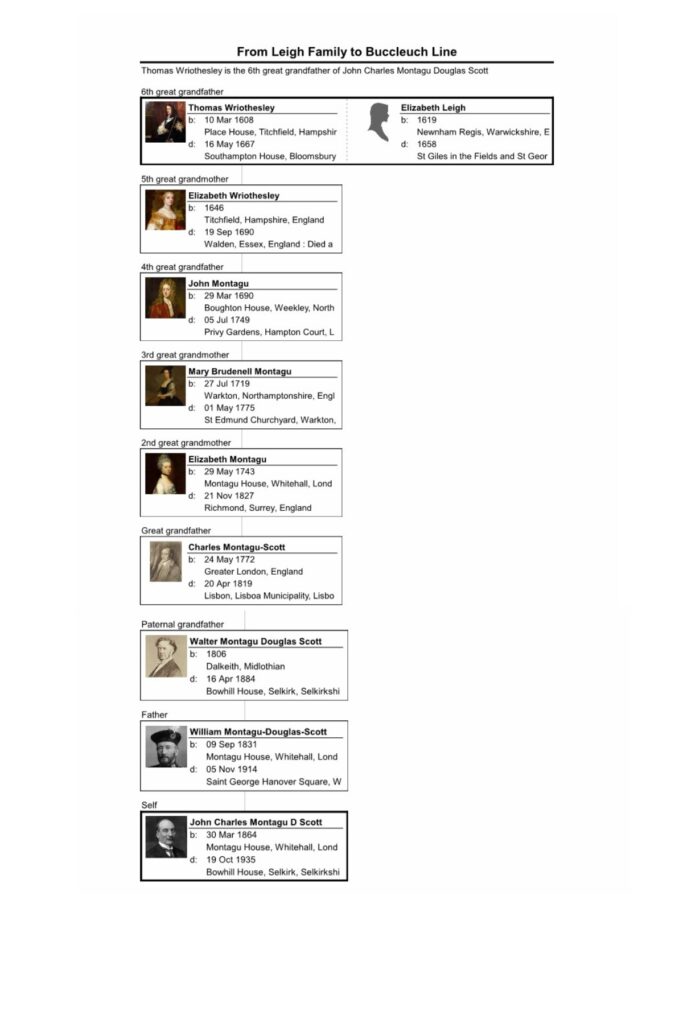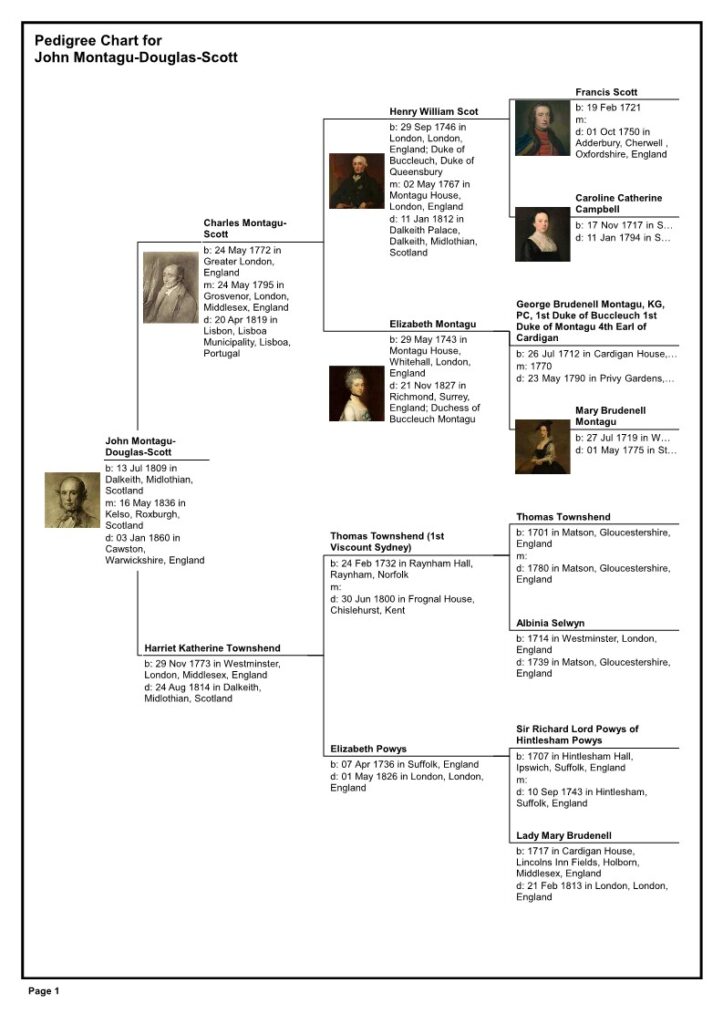Following the period of ownership by the Leigh family discussed here, the estates of Sir Francis Leigh (1598-1653) were inherited by his eldest daughter, Lady Elizabeth, wife of Thomas Wrothesley, fourth Earl of Southampton, of Beaulieu Abbey, Hants, whose only surviving child, Lady Elizabeth, brought the estates to her second husband, Ralph Montagu, son of Edward, Lord Montagu of Boughton, Northants. In 1688 Ralph was created Earl of Montagu. Ralph was Ambassador to the French Court, and died in 1709. The two eldest sons dying under age, the youngest, John, became Lord of this Manor. John was known as “John the Planter ’’ from his extensive planting of trees on all his estates; he it was who in 1740 planted the noble avenue extending along Dunsmore Heath from Stretton-on-Dunsmore to and beyond Dunchurch, scene in 1915, by a review by King George V. of the 29th Division of his army prior to their departure to Gallipoli. John had married Lady Mary, fourth daughter of John Churchill, first Duke of Marlborough, the latter nobleman possibly assisting at the planting, as he had done in planting trees on his estate at Boughton to represent the formation of the opposing armies at the battle of Blenheim. The only son of their marriage dying in his parents’ lifetime their youngest and only surviving daughter, Lady Mary, brought the estates to her husband, George Brudenell, fourth Earl of Cardigan, who in 1766 was created Duke of Montagu but dying in 1790, and predeceased by his only son John, was succeeded by his only daughter, Lady Elizabeth, who in 1767 had married Henry Scott, third Duke of Buccleuch and fifth Duke of Queensberry. It was during Elizabeth’s lifetime that Sir John Parnell, Postmaster General, attempted to obtain an Act of Parliament for power to cut down the avenue and Elizabeth’s determined opposition secured its preservation. On her death in 1827 she was succeeded in the Kings Newnham, Church Lawford, Dunchurch, Cawston, and Thurlaston Estates by her grandson, the Lord John Douglas Montagu-Douglas-Scott, who in 1836 married Alicia Annie Spottiswood, eldest daughter of John Spottiswood, of Spottiswood, County Berwick, the authoress of “Annie Laurie ” and other well-known songs. John Scott was the founder of the Rugby and Dunchurch Agricultural Society, a Governor of Rugby School, and so model a landowner that his tenantry erected a monument to his memory at Dunchurch.
On John Scott’s death in 1860 without an heir, these estates passed to his eldest brother Walter Francis, fifth Duke of Buccleuch and seventh Duke of Queensberry, who married Lady Charlotte Annie Thynne, daughter of Thomas, second Marquis of Bath. Walter Francis died in 1884, and was succeeded by his eldest son, William Henry Walter, sixth Duke of Buccleuch who married Lady Louisa Jane Hamilton, Mistress of the Robes to Queens Victoria and Alexandra. In 1910 William transferred the estates to his eldest surviving son, John Charles who was at the time Earl of Dalkeith, and later became the seventh Duke of Buccleuch.
In 1917 the sale took place of the Church Lawford and Kings Newnham properties to Samuel Waring as discussed here. The chart below shows the family line from the Leigh family to the seventh Duke, who was responsible for selling off the villages. See Note below for reference to Lord John Scott, who was not in the direct line.

The above charts do not show John Scott, as he was not in the direct hereditary line – the chart below fixes his position as the third son of the Charles Montagu Douglas Scott – who is also on the above chart.

